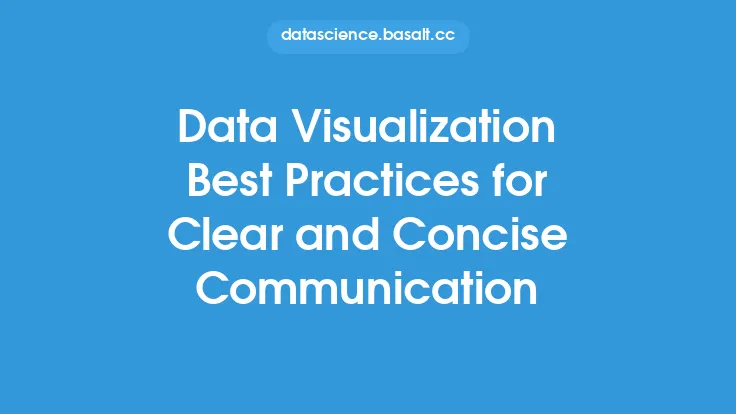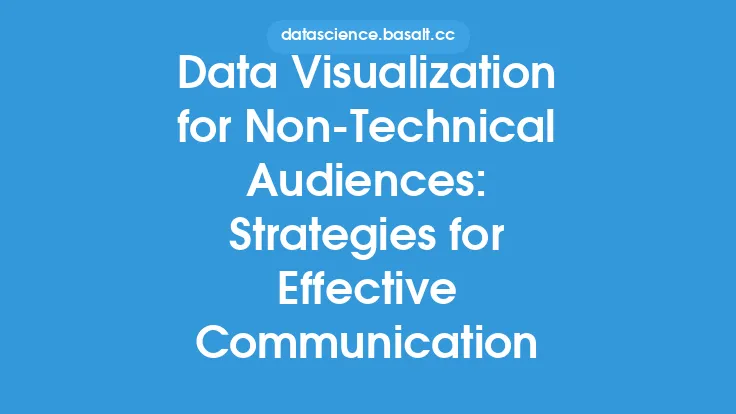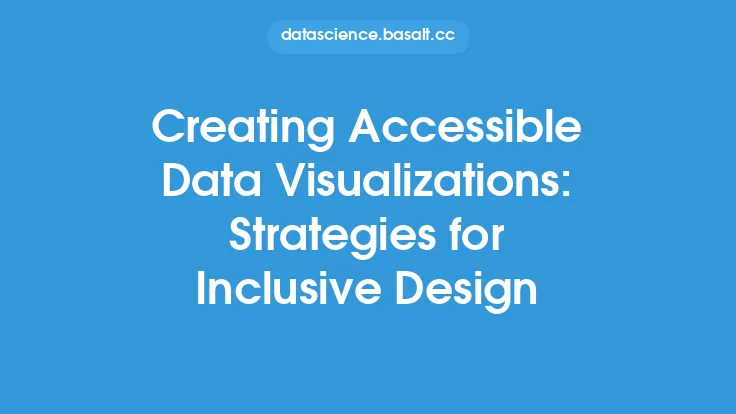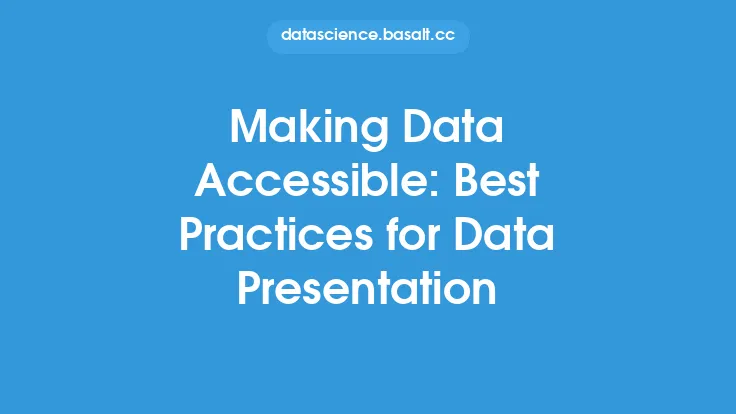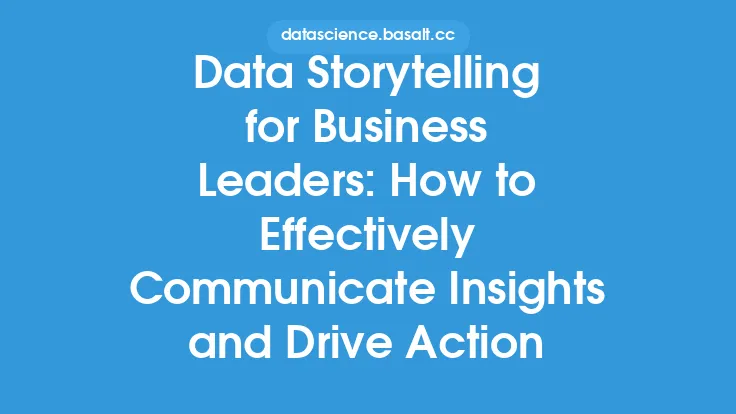In the realm of data storytelling, one of the most critical aspects is making data accessible to the intended audience. This involves presenting complex information in a clear and concise manner, allowing stakeholders to understand and make informed decisions based on the insights provided. Effective data communication is not just about conveying information, but also about ensuring that the message is received and understood by the target audience. To achieve this, several strategies can be employed, ranging from data visualization and simplification to audience-centric approaches and technical solutions.
Understanding the Importance of Accessibility
Making data accessible is essential for several reasons. Firstly, it enables stakeholders to understand the insights and recommendations presented, which is critical for decision-making. When data is presented in a clear and concise manner, it reduces the risk of misinterpretation and ensures that all stakeholders are on the same page. Secondly, accessibility promotes transparency and accountability, as it allows stakeholders to scrutinize the data and methods used to derive insights. Finally, accessible data communication fosters collaboration and engagement, as it enables stakeholders to provide feedback and contribute to the decision-making process.
Strategies for Clear and Concise Communication
Several strategies can be employed to make data accessible and promote clear and concise communication. One of the most effective approaches is data visualization, which involves using charts, graphs, and other visual aids to present complex information in a simple and intuitive manner. Data visualization can help to identify trends, patterns, and correlations, making it easier for stakeholders to understand the insights and recommendations presented. Another approach is simplification, which involves breaking down complex information into smaller, more manageable chunks. This can be achieved through the use of clear and concise language, avoiding technical jargon and focusing on the key findings and recommendations.
Audience-Centric Approaches
Audience-centric approaches are also critical for making data accessible and promoting clear and concise communication. This involves understanding the needs, preferences, and level of expertise of the target audience and tailoring the communication approach accordingly. For example, when presenting data to a non-technical audience, it may be necessary to avoid technical jargon and focus on the key findings and recommendations. On the other hand, when presenting data to a technical audience, it may be possible to use more advanced terminology and methodologies. Audience-centric approaches also involve considering the communication channels and formats used, such as reports, presentations, or dashboards, and ensuring that they are accessible and user-friendly.
Technical Solutions
Technical solutions can also play a critical role in making data accessible and promoting clear and concise communication. One of the most effective technical solutions is data storytelling tools, which enable users to create interactive and dynamic visualizations that can be shared with stakeholders. These tools can help to identify trends, patterns, and correlations, making it easier for stakeholders to understand the insights and recommendations presented. Another technical solution is data analytics platforms, which provide a range of tools and features for data analysis, visualization, and communication. These platforms can help to streamline the data communication process, making it easier to present complex information in a clear and concise manner.
Best Practices for Data Accessibility
To ensure that data is accessible and presented in a clear and concise manner, several best practices can be employed. Firstly, it is essential to understand the needs and preferences of the target audience and tailor the communication approach accordingly. Secondly, data visualization and simplification techniques should be used to present complex information in a simple and intuitive manner. Thirdly, technical solutions such as data storytelling tools and data analytics platforms should be leveraged to streamline the data communication process and make it easier to present complex information in a clear and concise manner. Finally, it is essential to test and refine the communication approach, soliciting feedback from stakeholders and making adjustments as needed to ensure that the message is received and understood.
Overcoming Common Challenges
Despite the importance of making data accessible and promoting clear and concise communication, several challenges can arise. One of the most common challenges is the complexity of the data itself, which can make it difficult to present insights and recommendations in a simple and intuitive manner. Another challenge is the lack of expertise or resources, which can limit the ability to leverage technical solutions or employ audience-centric approaches. To overcome these challenges, it is essential to prioritize simplicity and clarity, focusing on the key findings and recommendations and avoiding technical jargon and complex methodologies. Additionally, it is essential to leverage technical solutions and audience-centric approaches, tailoring the communication approach to the needs and preferences of the target audience.
Conclusion
In conclusion, making data accessible and promoting clear and concise communication is critical for effective data storytelling. By employing strategies such as data visualization, simplification, and audience-centric approaches, and leveraging technical solutions such as data storytelling tools and data analytics platforms, it is possible to present complex information in a simple and intuitive manner. By understanding the importance of accessibility, employing best practices, and overcoming common challenges, stakeholders can ensure that data is presented in a clear and concise manner, enabling informed decision-making and driving business success. Ultimately, the key to effective data communication is to prioritize simplicity, clarity, and accessibility, tailoring the communication approach to the needs and preferences of the target audience.

